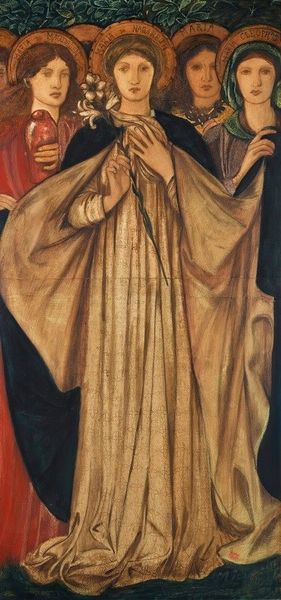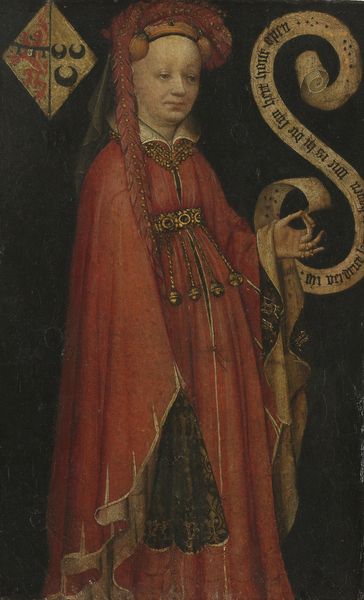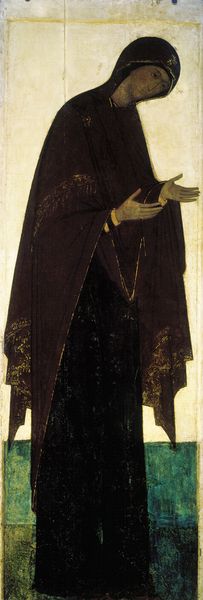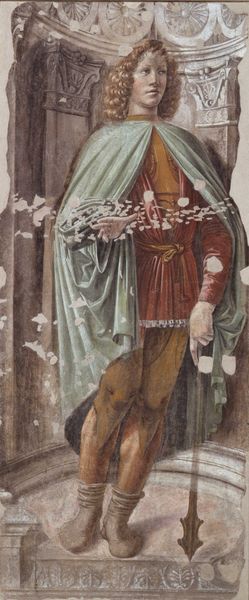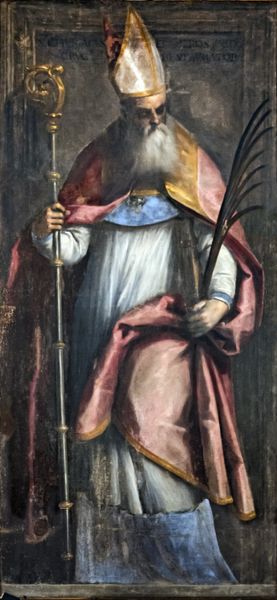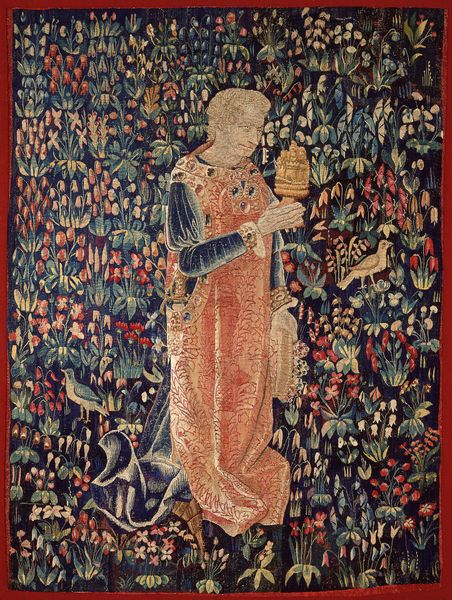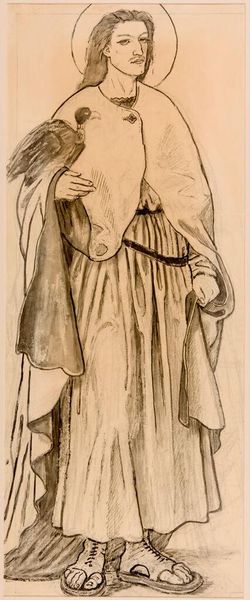
fibre-art, weaving, textile
#
fibre-art
#
medieval
#
weaving
#
textile
#
figuration
#
11_renaissance
#
history-painting
Copyright: Public Domain
This tapestry, titled "The Virgin and Saint John", resides in the Minneapolis Institute of Art, its creator lost to time. Observe the tactile quality achieved through the weaving. Notice how the artist uses vertical lines to give form to the figures' robes, creating a sense of depth and movement. The figures are arranged asymmetrically, adding to the emotional depth of the piece, with The Virgin in a posture of grief. The color palette, dominated by blues, reds, and earth tones, adds to the somber mood. The tapestry is a web of signs and symbols reflecting the cultural codes of its era. The halo indicates divinity, while the posture and dress convey religious meaning. Yet, it also invites questioning, destabilizing fixed meanings. The formal elements – color, composition, and texture – work together to create an emotional and intellectual experience.
Comments
minneapolisinstituteofart almost 2 years ago
⋮
This tapestry is a fragment of a larger hanging. Since both Saint John the Evangelist and the faltering Virgin look upward, it is probable that this was from the left side of a tapestry of the Crucifixion. It is not known for whom the original tapestry was made as Christ's Passion was a popular theme during the 15th and 16th centuries and was used by many artists to depict religious devotion. The basis for depicting John and Mary together this way comes from the Gospel according to St. John, where Jesus notes the two standing nearby and says to them that John should henceforth take his place as Mary's son (John 19:26-27).
Join the conversation
Join millions of artists and users on Artera today and experience the ultimate creative platform.
